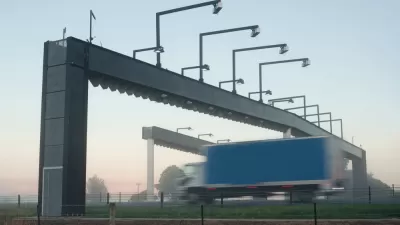The Pennsylvania P3 Act was approved in 2012 to help fund the cost of repairing and maintaining the state’s structurally deficient bridges. PennDOT has recently expanded its goals for the program—to 500 bridge repair projects.
With more than 4,000 structurally deficient bridges, Pennsylvania leads the nation in the ignominious metric of most structurally deficient bridges (18 percent of its bridges are structurally deficient, compared to the national average of 8 percent). But in the coming year, the state will launch a public-private partnership program to repair 500 of those bridges, reports Charles Chieppo.
The Pennsylvania P3 Act allows the Pennsylvania Department of Transportation (PennDOT) to bundle similar projects rather than designing and building each one at a time. Also, “Recognizing that operations and maintenance account for 80 to 90 percent of costs over the lifetime of a transportation asset, the private partners will also operate and maintain the bridges for as long as 40 years.” Because “Payment will be based on the contractor's performance at limiting lifecycle costs,” the private partners will have plenty of incentive to deliver durable products.
The PennDOT is expecting big returns from the program: “The Pennsylvania P3 Act…is expected to spark about $3.5 billion annually in additional transportation infrastructure investment without relying exclusively on tax revenue…” Not only that, but the PennDOT claims that “absent the [Pennsylvania P3 Act], the bridge replacements would take 15 to 20 years…”
FULL STORY: A Cost-Effective Way to Rebuild 500 Bridges

Alabama: Trump Terminates Settlements for Black Communities Harmed By Raw Sewage
Trump deemed the landmark civil rights agreement “illegal DEI and environmental justice policy.”

Study: Maui’s Plan to Convert Vacation Rentals to Long-Term Housing Could Cause Nearly $1 Billion Economic Loss
The plan would reduce visitor accommodation by 25% resulting in 1,900 jobs lost.

Planetizen Federal Action Tracker
A weekly monitor of how Trump’s orders and actions are impacting planners and planning in America.

Wind Energy on the Rise Despite Federal Policy Reversal
The Trump administration is revoking federal support for renewable energy, but demand for new projects continues unabated.

Passengers Flock to Caltrain After Electrification
The new electric trains are running faster and more reliably, leading to strong ridership growth on the Bay Area rail system.

Texas Churches Rally Behind ‘Yes in God’s Back Yard’ Legislation
Religious leaders want the state to reduce zoning regulations to streamline leasing church-owned land to housing developers.
Urban Design for Planners 1: Software Tools
This six-course series explores essential urban design concepts using open source software and equips planners with the tools they need to participate fully in the urban design process.
Planning for Universal Design
Learn the tools for implementing Universal Design in planning regulations.
Caltrans
Smith Gee Studio
Institute for Housing and Urban Development Studies (IHS)
City of Grandview
Harvard GSD Executive Education
Toledo-Lucas County Plan Commissions
Salt Lake City
NYU Wagner Graduate School of Public Service



























